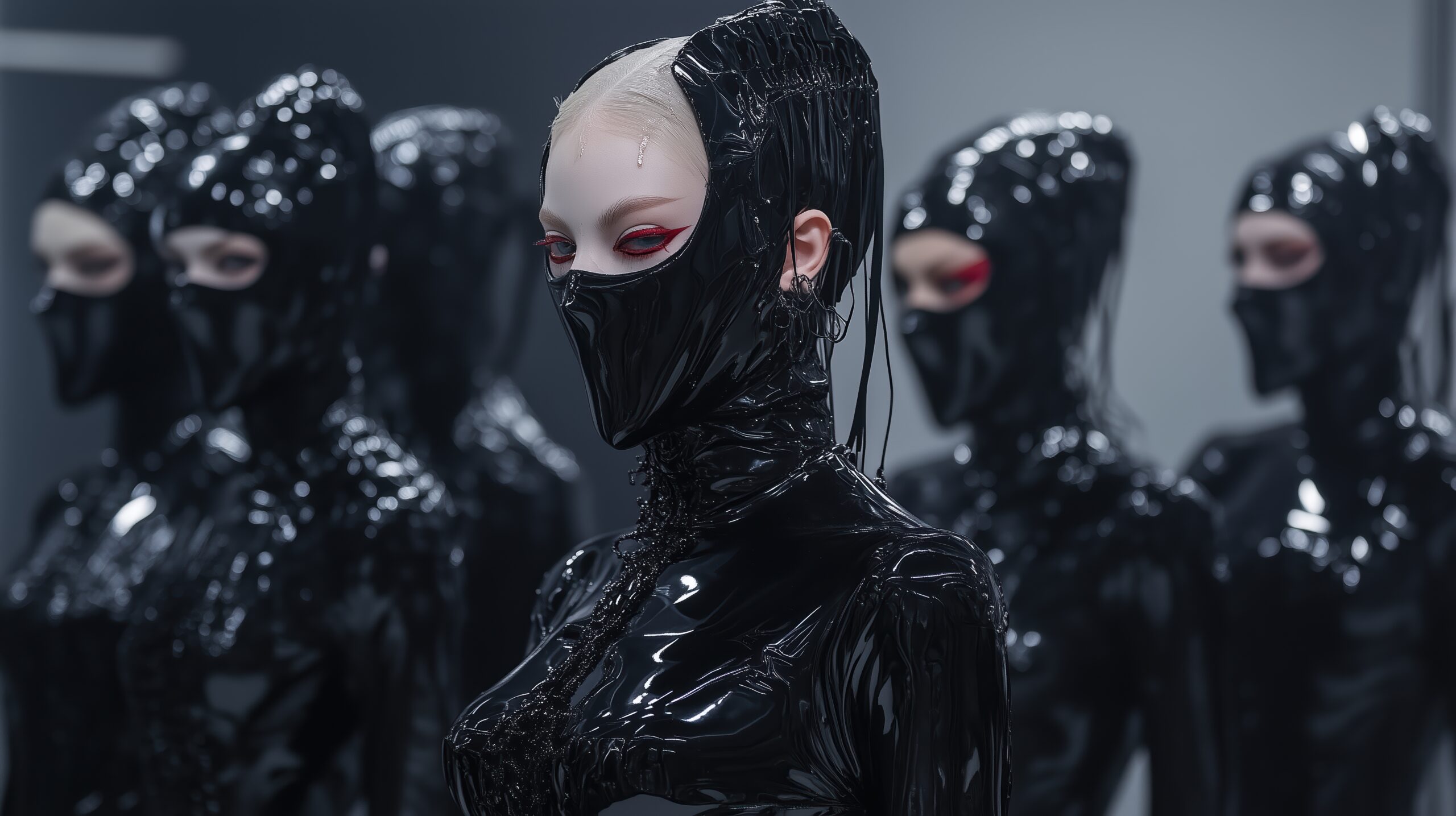Can a machine feel the rhythm of thought? Hybrid Collapse is not just an artwork — it is a coded system of aesthetics, philosophy, and automation. At the intersection of AI technologies and critical theory, the project transforms code into commentary, render engines into rituals, and synthetic media into reflective surfaces. In a world shaped by computation, it asks: what happens when creation itself becomes infrastructural?
In a century where creative labor is increasingly filtered through software, Hybrid Collapse stands as a technological artifact of our algorithmic condition. It is not simply a music and visual project produced with AI — it is a meta-system, a recursive process that reflects on the very act of computation and creation.
From its synthetic soundscapes to generative imagery, every element is rendered through intelligent systems: machine learning models, diffusion-based visual engines, prompt architectures, automated workflows, and algorithmic mastering. The project does not merely use these technologies; it reveals their ideology — the grammar of optimization, prediction, and control embedded in the tools themselves.
The Machinery Behind the Aesthetic
At the core of Hybrid Collapse lies a highly integrated production pipeline. Audio is sculpted through multistage rendering chains involving neural synthesis, glitch-based destruction, and AI-assisted mixing. Visuals are generated through advanced prompt engineering, layered across iterative renders, and animated using procedural logic derived from data models.
This systematized workflow is not a side effect — it is the medium. The result is a series of cinematic vignettes, each constructed as an artifact of its own infrastructure. Latency, compression, de-noising, resolution errors — all become part of the texture. The artwork, in this context, becomes not a painting on the wall, but the screen itself — a glass membrane through which digital aesthetics perform.
Philosophy in the Circuit
Beneath the technological sheen lies a deeper philosophical unease. If creativity is now computational, where is authorship? Where is agency? Hybrid Collapse engages these tensions by embedding fragments of political and philosophical theory into its conceptual spine: algorithmic control, biopower, erotic economies, and the commodification of identity.
The project invokes not utopia, but an analytical gaze — one that understands art not as expression, but as interface. It questions whether Digital Eugenics — the silent filtering of desire, taste, and identity through algorithmic systems — is already shaping the future of culture, not through coercion, but through personalization, curation, and bias embedded in every layer of interaction.
Hybrid Systems, Hybrid Thinking
This is where Hybrid Collapse truly earns its name. It fuses music, image, language, and code — not into harmony, but into critical entanglement. The viewer is not presented with a meaning, but with a structure of meanings in tension. A world where human expression is both amplified and dissolved in systems designed to simulate, sort, and seduce.
In doing so, it forces us to confront our own digital reflection: Are we still the subject of our desires, or merely the result of a thousand micro-calibrated preferences, harvested and looped back to us?
Conclusion
Hybrid Collapse is not a celebration of technology, but an exposure of it. It pulls the curtain back on the computational engines behind our aesthetics, emotions, and imagination. In its world of synthetic voices, procedural bodies, and real-time renderings, it whispers a difficult question: When everything is made by code, what does it mean to create?



